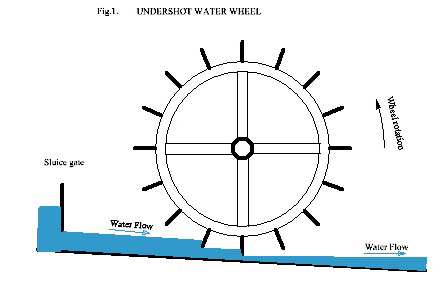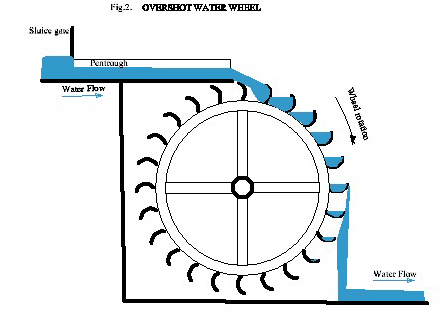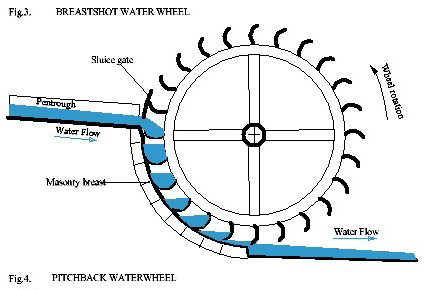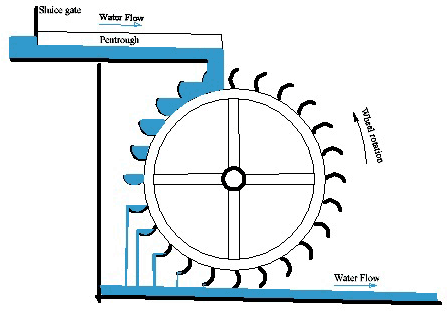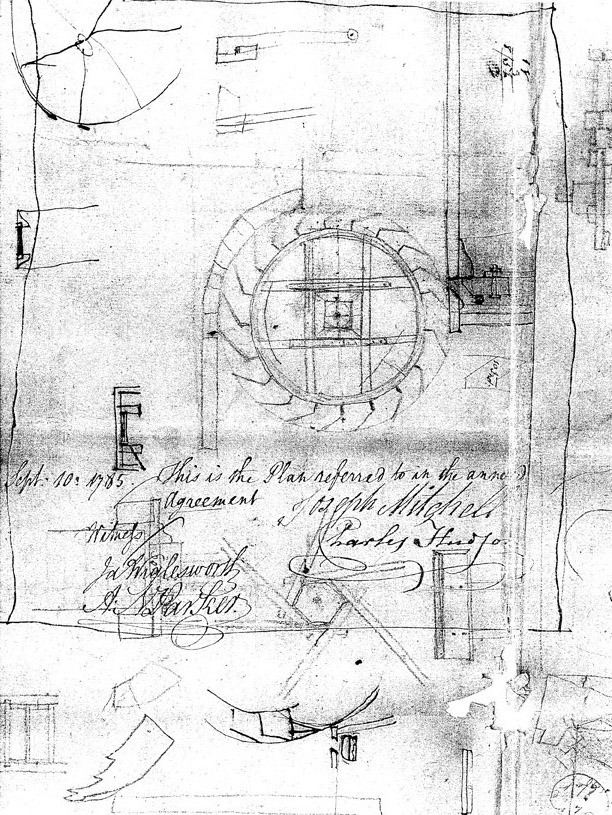Types of water wheels |
|
The earliest water wheels in Calderdale were undershot wheels which were placed directly in the stream. They were used mainly on rivers such as the Calder with a large quantity of water but without much fall. The water wheels built in the late 18th and early 19th century were usually over shot or occasionally breast shot wheels. Because these wheels are turned by the weight of water, this meant that a relatively small stream could be used to turn some large water wheels. Basic Types Water wheels fall into one of two categories, which are defined by the plane of rotation of the wheel:-
In practice the only type used in textile mills was the vertical wheel. Vertical water wheels can be conveniently classified into four types but in some cases a group could be considered as a modified version of another type. The types are:-
This is the earliest type of wheel which used the kinetic energy in the flowing water to push the wheel round and was use for fulling and corn mills. A later version (the Poncelet Wheel) was similar in construction but used curved blades which made more effective use of the energy in the flowing water. It does not require a large head of water, so that it can be used in any stream where water is flowing at a usable speed in sufficient quantity. The civil engineering works required for its installation are minimal.
This type is a logical development of the undershot wheel in that it uses the weight of the water to drive the wheel so that rotation is caused by the pull of gravity on the water contained in the buckets. However it requires a head of water greater than the wheel diameter in order to feed the water onto the top of the wheel. It therefore requires considerably greater civil engineering works in its installation but it repays this cost by extracting more energy from the water available.
This type of wheel was used to extract as much power as possible from a stream which provided a head of water which was insufficient to power an overshot wheel.
This type can be considered as a variation on the overshot wheel since the water is fed in at near the top of the wheel. It is different in that the water is fed in vertically downwards and that it rotates in the opposite direction to the overshot wheel. It has this direction of rotation in common with the breastshot wheel and is therefore sometimes referred to as a ‘High breastshot wheel’. The civil engineering works required for its installation are similar to those for an overshot wheel. A Water Driven Fulling Mill The use of water power for the textile industry began with fulling. Fulling is the process by which woollen cloth was cleansed and thickened through beating the cloth with either potash or fullers earth and water. The workings of an 18th century fulling mill are illustrated by this drawing made of Jumples Mill, Ovenden in 1785. A wheel on the same shaft as the waterwheel had projecting cams which lifted heavy wooden hammers. These hammers or fulling stocks fell on to the cloth placed in a trough with water and the cleansing agent. This drawing was made in 1785 for Charles Hudson of Skircoat, Halifax. John Mitchell agreed to build the mill, water wheel and machinery and was to be paid £190 10s 6d. It was a mainly timber overshot waterwheel on an oak shaft, but the flanges that connected the arms to the shaft were to be of cast iron, and to be “fitted to the axle tree without mortice”, alleviating the problem of water eventually rotting the shaft. |
